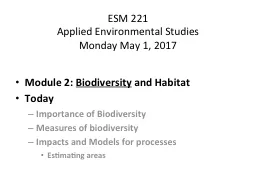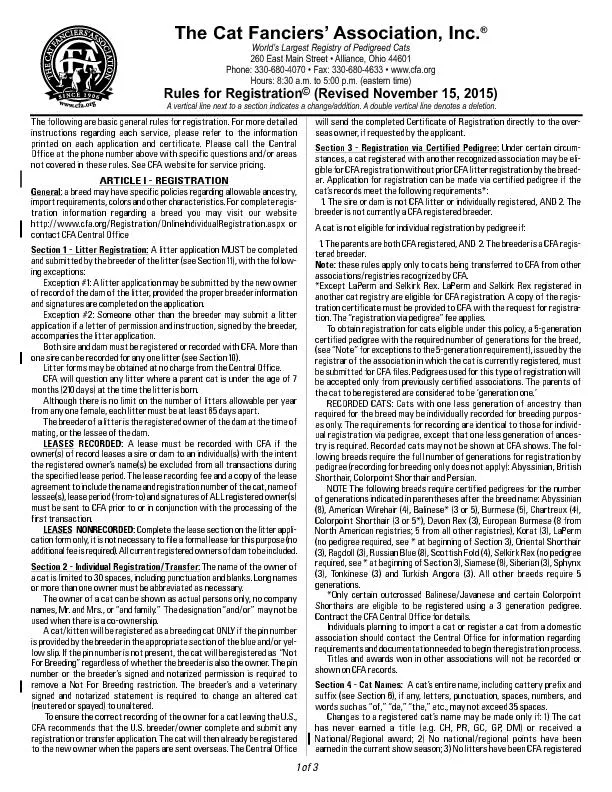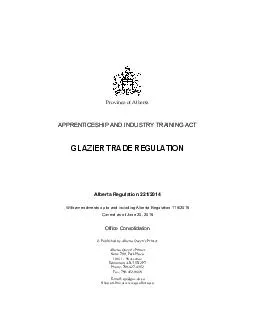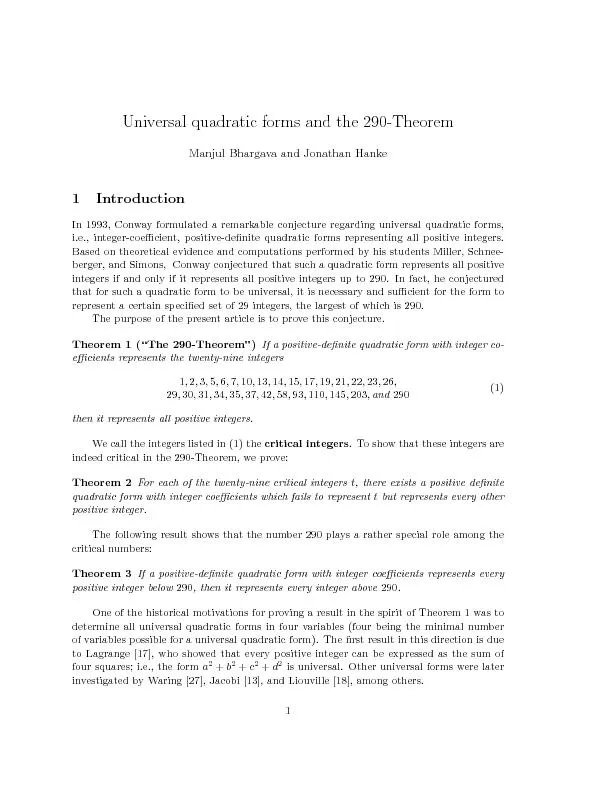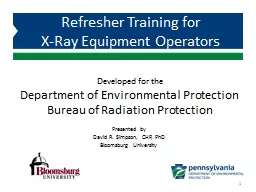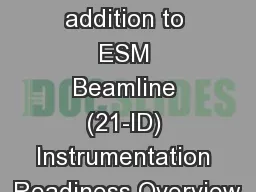PPT-ESM 221
Author : briana-ranney | Published Date : 2017-12-14
Applied Environmental Studies Monday May 1 2017 Module 2 Biodiversity and Habitat Today Importance of Biodiversity Measures of biodiversity Impacts and Models
Presentation Embed Code
Download Presentation
Download Presentation The PPT/PDF document "ESM 221" is the property of its rightful owner. Permission is granted to download and print the materials on this website for personal, non-commercial use only, and to display it on your personal computer provided you do not modify the materials and that you retain all copyright notices contained in the materials. By downloading content from our website, you accept the terms of this agreement.
ESM 221: Transcript
Download Rules Of Document
"ESM 221"The content belongs to its owner. You may download and print it for personal use, without modification, and keep all copyright notices. By downloading, you agree to these terms.
Related Documents

